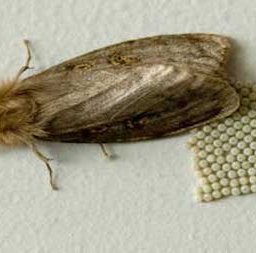A new fur coat, regardless of the fur type, will be a substantial investment – it’s not unusual to spend £5,000 – £8,000 on a new mink coat. On the other hand, based on our research, there seems to be few worthwhile options for men interested in a classically styled, elegant coat. Most of the available stock at a modern furrier is for women, or it seems to cater to men seeking coats purely for flash – dyed furs in rainbow colours, puffy exaggerated cuts, or brash stripes that can be seen from a few yards away. Worse yet, these coats are finished cheaply with polyester linings and plastic (!!) zippers. Unless you can afford to go bespoke, a new coat is not a good option for any man who enjoys well-crafted, tasteful style.
That leaves vintage coats. While this certainly reduces the availability, going vintage also eliminates the need to spend so much money, verify the fur source for ethical practices, and weed the classic cuts out from in between the flashy jackets. This choice also encourages the reuse of an already-harvested product without contributing actively to the modern fur trade. In addition, you’re more likely to find hardy, domestic fur varieties such as beaver, nutria, squirrel, coyote, and raccoon. For such a purchase, it’s a good idea to find a vintage retailer that specialises in fur pieces; they will know how to identify fur, inspect it properly, and price each piece appropriately.The downside is that a good vintage fur retailer will know what they have, and good deals will be harder to come across.
Feel free to visit our workshop to see what we have available.
Beaver Under Hair
There are several possible fur pieces that one might encounter in vintage stores. Fur collars, cuffs, coat linings, and full coats are common products for men. The first step, upon encountering an interesting piece, is to determine if it’s real. Unfortunately, despite the growing prowess of faux fur makers, nothing will compare to the real thing. Fake fur can feel stiff, plastic-y, or rough, and seams between sections are obvious and exposed. The hairs will be all of uniform length, and the dye is often uneven or simply unrealistic looking. Next to the real thing, after a bit of practice, it will be easy to spot the fakes. A real fur should feel luxurious – soft, plush, dense, and extremely warm. There are a few quick tests to verify if the fur is real:
- Does the fur have a distinct nap, meaning that the hairs lie in one direction? Fake fur usually sticks out haphazardly in all directions. An animal can also have a colic, so a swirl or change in direction in some spots is a positive sign.
- Are the hairs dense? A good fur will have high density and by separating the layers, you should not be able to see the underlying material or base, but rather just the baby-soft under hairs.
- Does it feel right? That may seem galling to a beginner, but I guarantee that there is such an astounding difference between real and fake that feel alone should give you a good indication of it’s origin. Animals that are around water, such as beavers and racoons, will have long, waxy guard hairs (sometimes plucked or trimmed) over the under hair that will reflect light. Plusher animals such as fox feel more universally soft, though it is still possible to distinguish between the guard and under hairs.
Missing Guard Hair – Fur Is Not In Good Shape
Once you’ve found a real piece, there is another important buying factor to consider: condition. A poorly maintained or a doggedly-worn fur is often not worth buying; signs include bald spots, noticeably worn cuffs or collars, stiffness of the leather underlying the hairs, and cracking and splitting along the seams. Unfortunately, these maladies of age cannot be reversed, and full coats are especially susceptible. Make sure to wear a full coat around the shop for 15 minutes – I once donned a lovely white rabbit fur coat only to have it split the moment I raised my arms. Collars are much easier to buy in that respect, since there are few seams and they can often survive in normal storage.
As to sizing, it’s incredibly difficult to adjust ANY of the dimensions of a fur piece, so make every effort to find one that really fits well. Also, it’s important to note that very few vintage coats are odour-free; many will smell musty, mothball-y, or just plain old.


